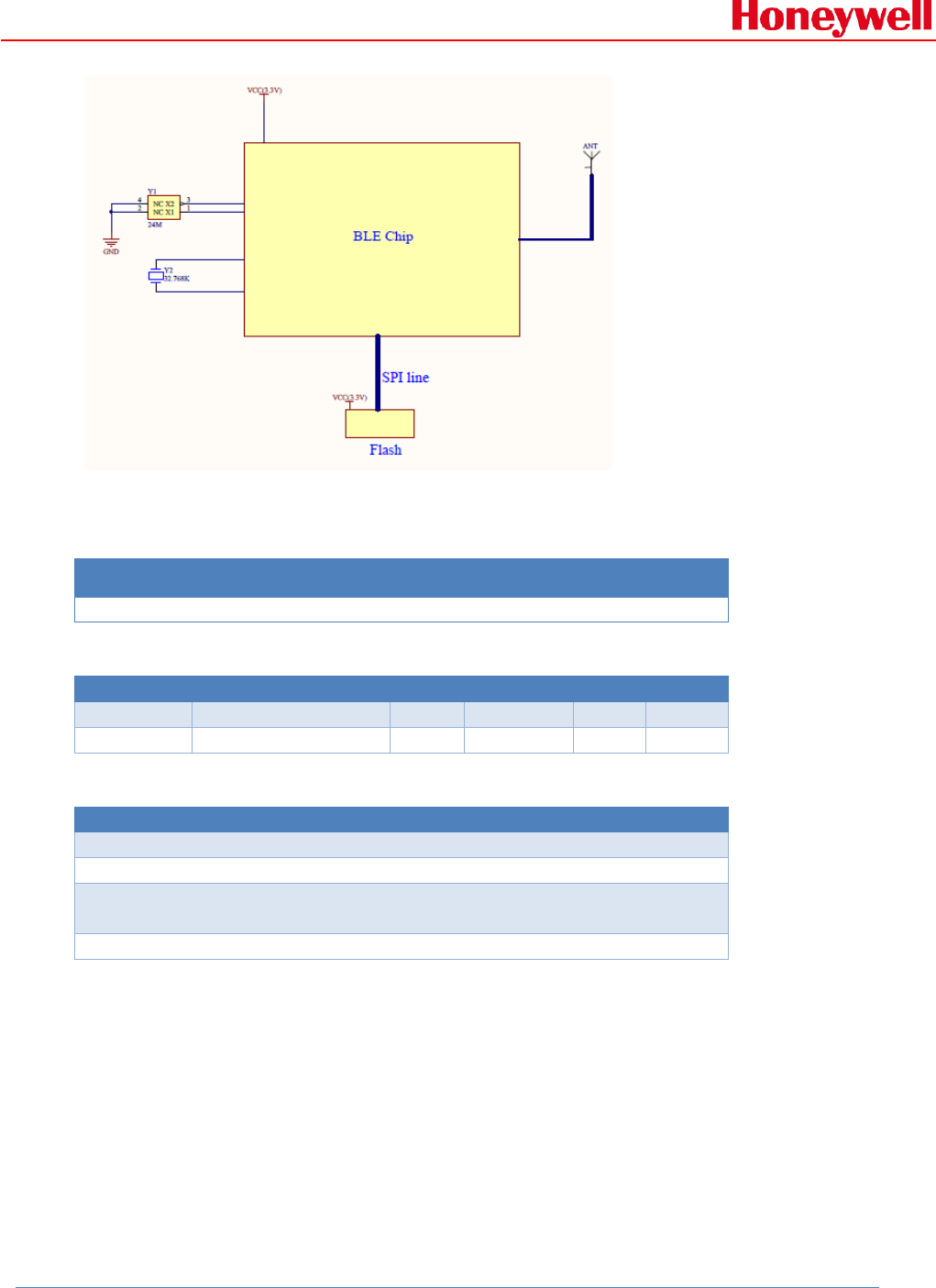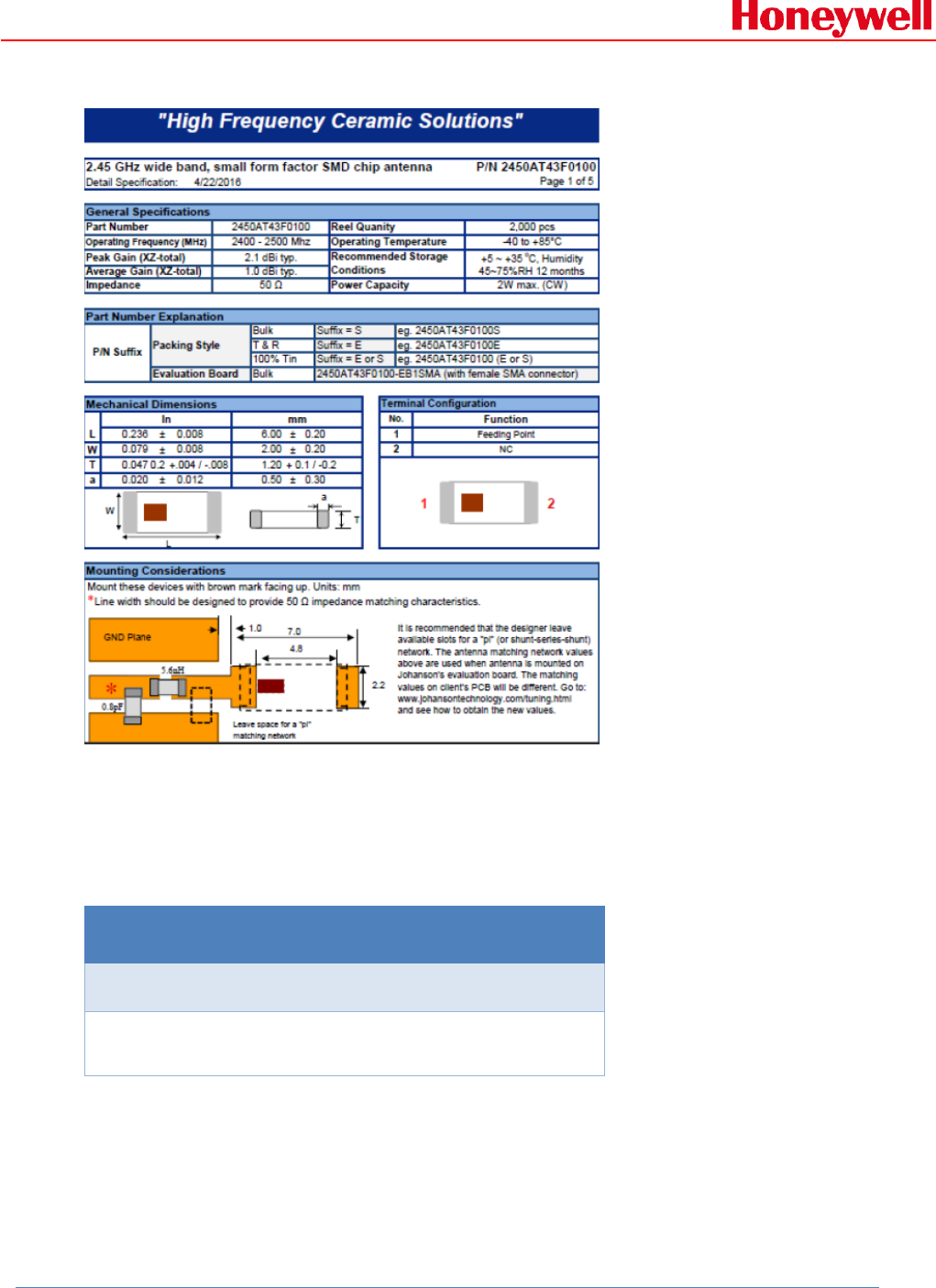RAE Systems RMBLEB RMBLEB User Manual
RAE Systems, Inc RMBLEB
User manual

RAE Systems by Honeywell
Revision3 Page 1 of 9
Copyright © 2018 Honeywell Analytics, All rights reserved.
BLE module operation description
Document Information
Info
Content
Author(s)
Revision
1.0
Document Status
Draft
Date
2018-8-14
Distribution
Approvals
Name
Date
Signature

RAE Systems by Honeywell
Revision3 Page 2 of 9
Copyright © 2018 Honeywell Analytics, All rights reserved.
Release Histroy
Rev.
Date
Author
Descripition
1.0
2018-8-14
FengJunjie
Initial draft

RAE Systems by Honeywell
Revision3 Page 3 of 9
Copyright © 2018 Honeywell Analytics, All rights reserved.
Contents
1. Overview: ........................................................................................................................................ 4
1.1 Modem Overview: ............................................................................................................... 4
1.2 Key Features: ...................................................................................................................... 4
2. Modem Pin Definitions: ................................................................................................................... 4
2.1 Block Diagram:.................................................................................................................... 4
2.2 Power supplier(powered by host PCBAs): ......................................................................... 5
2.3 Current Consumption: .......................................................................................................... 5
2.4 RF specification: ................................................................................................................... 5
2.5 Antenna specification: ....................................................................................................... 6
3. Specifications .................................................................................................................................. 6
3.1 Physical Characteristics: ..................................................................................................... 6
4. Regulatory ...................................................................................................................................... 7

RAE Systems by Honeywell
Revision3 Page 4 of 9
Copyright © 2018 Honeywell Analytics, All rights reserved.
1. Overview:
1.1 Modem Overview:
The Honeywell BLE is a highly-integrated Bluetooth low-energy (BLE) module,
which offers a complete solution containing all hardware features necessary for
development of wireless application.
The transmitted data are divided into packets and each packet is transmitted on
one of the 40 channels with the channel spacing of 2 MHz. The first channel
starts at 2402 MHz and continues up to 2480 MHz. It offers superior radio
performance, based on TI CC2640R2F.
1.2 Key Features:
Ultra-compact size (46*26*1.6 mm)
BLE 5.0
UART interfaces
Low power consumption
Embedded antenna design
FCC and CE compliant
RoHS compliant, certified lead-free and halogen-free
2. Modem Pin Definitions:
2.1 Block Diagram:

RAE Systems by Honeywell
Revision3 Page 5 of 9
Copyright © 2018 Honeywell Analytics, All rights reserved.
2.2 Power supplier(powered by host PCBAs):
Symbol
Min
Typ
Max
Unit
3.3V
1.9
3.3
3.6
V
2.3 Current Consumption:
Test condition
Min
Typ
Max
Unit
Peak
Sending data package
8
mA
Average
Low power mode
80
uA
2.4 RF specification:
Test condition
Min
typ
Max
Unit
Frequency Range
2402
2480
MHz
Channel Space
2
MHz
TX power
RBW=1M
VBW=3M
3
4
dBm
Rx sensitivity
PER 1%
-85
dBm

RAE Systems by Honeywell
Revision3 Page 6 of 9
Copyright © 2018 Honeywell Analytics, All rights reserved.
2.5 Antenna specification:
3. Specifications
3.1 Physical Characteristics:
Parameter
Unit
Dimension
18.8*13.5*1
mm
Operation temperature
-40 to +55
℃

RAE Systems by Honeywell
Revision3 Page 7 of 9
Copyright © 2018 Honeywell Analytics, All rights reserved.
4. Regulatory
Caution:
4.1. This device complies with Part 15 of the FCC Rules / Industry
Canada licence-exempt RSS standard(s). Operation is subject to
the following two conditions: (1) this device may not cause
harmful interference, and (2) this device must accept any
interference
received, including interference that may cause undesired
operation.
Le présent appareil est conforme aux CNR d'Industrie Canada
applicables aux appareils radio exempts de licence. L'exploitation
est autorisée aux deux conditions suivantes : (1) l'appareil ne doit
pas produire de brouillage, et (2) l'utilisateur de l'appareil doit
accepter tout brouillage radioélectrique subi, même si le
brouillage est susceptible d'en compromettre le fonctionnement.
Changes or modifications not expressly approved by the party
responsible for compliance could void the user's authority to
operate the equipment.
This equipment has been tested and found to comply with the
limits for a Class B digital device, pursuant to part 15 of the FCC
Rules. These limits are designed to provide reasonable protection
against harmful interference in a residential installation. This
equipment generates uses and can radiate radio frequency energy
and, if not installed and used in accordance with the instructions,
may cause harmful interference to radio communications.
However, there is no guarantee that interference will not occur in a
particular installation. If this equipment does cause harmful
interference to radio or television reception, which can be
determined by turning the equipment off and on, the user is
encouraged to try to correct the interference by one or more of the
following measures:
—Reorient or relocate the receiving antenna.
—Increase the separation between the equipment and receiver.

RAE Systems by Honeywell
Revision3 Page 8 of 9
Copyright © 2018 Honeywell Analytics, All rights reserved.
—Connect the equipment into an outlet on a circuit different from
that to which the receiver is connected.
—Consult the dealer or an experienced radio/TV technician for
help.
Under Industry Canada regulations, this radio transmitter may
only operate using an antenna of a type and maximum (or lesser)
gain approved for the transmitter by Industry Canada. To reduce
potential radio interference to other users, the antenna type and
its gain should be so chosen that the equivalent isotropically
radiated power (e.i.r.p.) is not more than that necessary for
successful communication.
Conformément à la réglementation d'Industrie Canada, le présent
émetteur radio peut fonctionner avec une antenne d'un type et
d'un gain maximal (ou inférieur) approuvé pour l'émetteur par
Industrie Canada. Dans le but de réduire les risques de brouillage
radioélectrique à l'intention des autres utilisateurs, il faut choisir
le type d'antenne et son gain de sorte que la puissance isotrope
rayonnée équivalente (p.i.r.e.) ne dépasse pas l'intensité
nécessaire à l'établissement d'une communication satisfaisante.
4.2. The module is limited to OEM installation ONLY.
The OEM integrator is responsible for ensuring that the end-user
has no manual instruction to remove or install module.
When the FCC identification number or ISED certification number
is not visible when the module is installed inside another device,
then the outside of the device into which the module is installed
must also display a label referring to the enclosed module. This
exterior label can use wording such as the following: “Contains
FCC ID: SU3RMBLEB” or ”Contains IC: 20969-RMBLEB” and the
information should be also contained in the devices’ user manual.
Changes or modifications not expressly approved by the party
responsible for compliance could void the user's authority to
operate the equipment. The devices must be installed and used in

RAE Systems by Honeywell
Revision3 Page 9 of 9
Copyright © 2018 Honeywell Analytics, All rights reserved.
strict accordance with the manufacturer’s instructions as
described in the user documentation that comes with the product.
This device is intended only for OEM integrators under the
following conditions: 1) The antenna must be installed such that
20 cm is maintained between the antenna and user. 2) The
transmitter module may not be co-located with any other
transmitter or antenna.